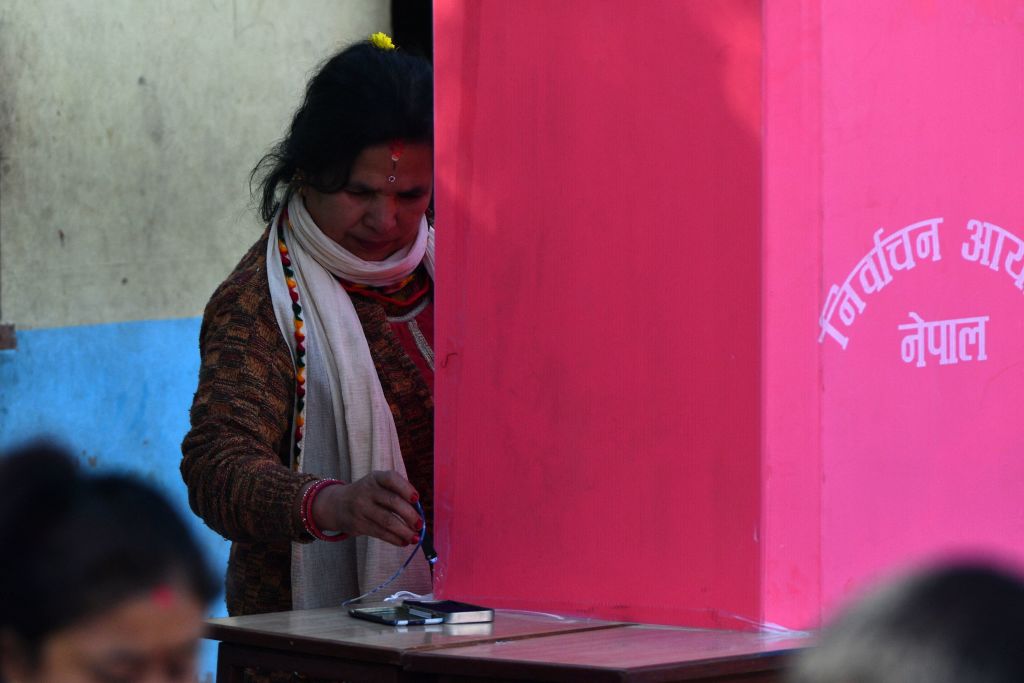- Tuesday, April 29, 2025

By: Shubham Ghosh
While ballots were still counted in the parliamentary elections in the Himalayan democracy of Nepal that were held on November 20, it is visible that the six-party pre-poll alliance led by prime minister Sher Bahadur Deuba’s Nepali Congress and the Communist Party of Nepal (Maoist Centre) led by former prime minister Pushpa Kamal Dahal ‘Prachanda’ is in the lead.
For India, the results of the November elections, only the second since the country adopted its republican constitution seven years ago, are crucial for carious reasons. New Delhi would like to see the continuance of the Deuba-led government for the Nepali Congress is known for its old ties with India and under the premiership of Deuba, ties between the two neighbours have recovered much from the low to which they had sunk in the times of KP Oli, the immediate predecessor of Deuba.
The 78-year-old Deuba, who succeeded Oli in June last year, made his first visit to India in April this year. His three-day itinerary included Varanasi and the Kashi Vishwanath Temple, considered holy places by the Hindus, and helped to kickstart a time-tested relationship which was hit by the map controversy in Lipulekh in 2020, with former prime minister Oli accused of raking it up scoring political brownie points at home.
Even before Oli became the prime minister for the first term in October 2015 which lasted till next August, India and Nepal witnessed a bitter phase over the Himalayan state’s new constitution adopted around the same time. The Indian side was disappointed that the final draft of the Nepali constitution did not feature the marginalisation concerns of the ethnic Madhesi and Tharu groups that live in the southern Terai region along the border between the two neighbours and constitute 40 per cent of Nepal’s population.
A blockade took place along the border which crippled supplies to the landlocked country for months and Oli then turned to China, Nepal’s only other neighbour, for help. During Oli’s second term that lasted till 2021, India-Nepal relations witnessed a low over the Lipulekh controversy.
But Oli’s second government also had its problems and eventually Deuba rose to replace him. Things started looking better after his rise as Indian prime minister Narendra Modi visited Lumbini after the former came to India. It was Modi’s fifth visit to the Himalayan neighbour.
Nepal’s polls are a blend of the first past the post for candidates and proportional representation for parties. While Deuba’s Nepali Congress is leading all other players in the number of seats it has won, it is lagging its alliance partner, Prachanda’s Communist Party of Nepal (Maoist Centre) on the count of proportional representation, under which the party will get additional seats depending on its vote share.
Deuba and Prachanda would have to work out a power-sharing framework before setting up a government. There could also be a middle scenario in which Deuba and Oli could form the government as part of a mega deal. It is also being said that Deuba’s wife Arooja, known to be politically ambitious, could also get a plum post in the government if Oli becomes the prime minister again.
The Rashtriya Swatantra Party, which has appealed to Nepal’s urban youth with its promises of good governance, has been this election’s find. The party has won six seats and garnered 10 per cent of the vote share which will see it occupying more seats in the parliament.
In the Madhes region, the Janamat Party led by C K Raut has emerged as a major challenger.
Whatever be the shape and form of the new government, India would feel that it might not last its term due to various factors.
“The elections have provided a complex, fragmented mandate. Political stability could be elusive,” Ranjit Rae, who was India’s envoy to Nepal from 2013 to 2017, and has authored a recent book on India-Nepal relations, told the Indian Express.
Also for New Delhi, China’s looming presence is another challenge that comes with Nepal which has traditionally played both India and China cards to serve its own interests.